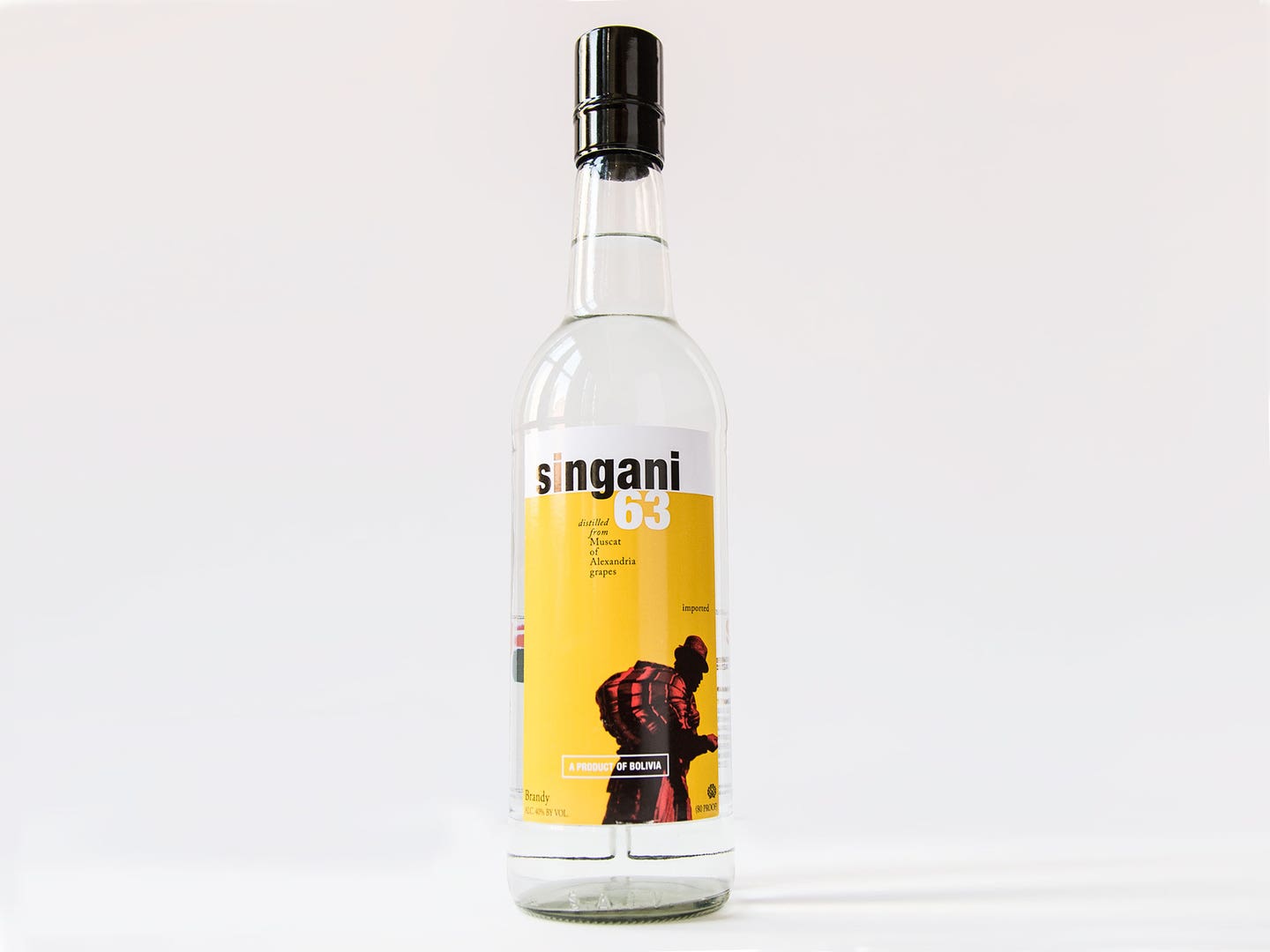
I usually pay little mind to Hollywood-endorsed liquor. And why would I? There are a handful of good celebrity wines—Francis Ford Coppola has been putting out legit juice since the '70s—but when it comes to spirits, the chances are low that it isn't some bullshit flavored vodka. For the most part, if there's a bold-faced name attached to a bottle, it's not worth unscrewing the cap. That's not the case, however, with the new-ish Steven Soderbergh joint, Singani 63, which you can now find in New York and California at wine shops and great cocktail bars like Los Angeles's Honeycut and Manhattan's PDT.
As the romance copy goes, Soderbergh was at kickoff party in Madrid for the 2008 biopic Che when the casting director gave him a swig of singani, a clear grape-based Bolivian spirit made from aromatic Muscat of Alexandria grapes grown at high altitudes in the Andes mountains. It was eye opening—clean and fragrant, intoxicatingly floral and fruity. Like pisco, which it's sometimes compared to, singani came about because the Spanish brought grapes and their distilling methods over to Latin America. Five hundred years later, it's the national drink of Bolivia with a Domain of Origen, and yet still mostly unknown outside the country.
By the time the film wrapped, Soderbergh was completely taken with singani, but it was nowhere to be found in the U.S. To procure a steady supply, the director had to become an importer himself, and so he started working with one of the largest singani distilling companies, Casa Real, to make it happen. In 2014, after years of navigating head-bangingly byzantine alcohol regulations, Soderbergh introduced Bolivia’s indigenous liquor to the U.S. in the form of Singani 63—the number is a reference to his birth year (hey, it is a celebrity brand after all). The spirit is so new to the States that it’s misclassified as a brandy—the method of production, which does not include aging, is closer to eau de vie—because an accurate category doesn’t exist under current regulations.
Hyperion
This riff on the classic cocktail the Titan (scotch, dry vermouth, apricot liqueur, white crème de cacao, orange bitters) swaps out vermouth for the fruitier Bolivian spirit singani.
American bartenders are just starting to play around with Singani 63, still the only singani available here. "We just got it in six months ago," says Chris McLeod of bar Dutch Kills in New York City. "It's unique. It's made with one grape, which is unusual. The muscat profile is very up front, and it doesn't have any rough edges." In other words, it's smooth as silk. McLeod likes subbing it for the traditional brandy into pisco sours, a natural fit, or using it to replace vermouth in a twist on the scotch-based Titan; he also plans to experiment with it in drinks traditionally made with cognac or applejack.
But you don’t need to be a fancy cocktail bartender to figure out what to do with singani. It’s easy to like in simple, breezy cocktails, such as Bolivian favorite the Chuflay, a sessionable combination of singani and ginger ale over ice with a wedge of lime. Or do as they do in Bolivia, where the higher end stuff is sipped straight or on the rocks. Singani 63, which is delicately floral and herbaceous with lush stone fruit notes, lends itself to just that.
Singani 63, $30 for a 750-ml bottle at klwines.com
Keep Reading
Continue to Next Story










